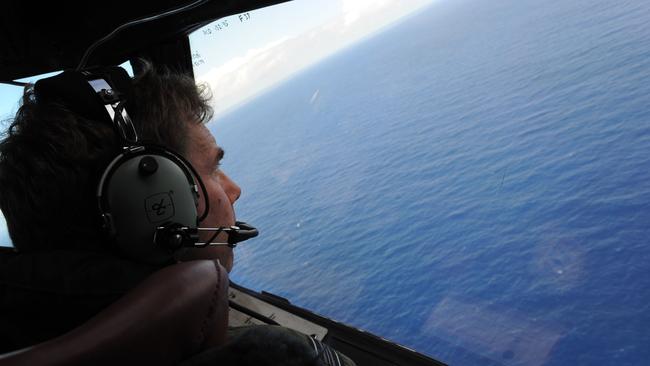The wreckage of flight MH370 may never be found after international investigators concluded it is probably not in the stretch of ocean a $200 million, Australian-led search effort has combed for the past two years.
A recommendation by the investigators to search a new 25,000-square-kilometre area north of where it was first thought the Malaysia Airlines plane crashed has been quickly dismissed by the government, which has said the jet's exact location would need to be pinpointed before resources are committed to scouring any new area.
MH370 disappeared in March 2014 with 239 people on board en route from Kuala Lumpur to Beijing. Most of the passengers were Chinese or Malaysian and six were Australian.
The current 120,000-square-kilometre search zone in the Indian Ocean is due to be exhausted by January.
"There is a high degree of confidence that the previously identified underwater area searched to date does not contain the missing aircraft," the review, released by the Australian Transport Safety Bureau and conducted by a panel of international experts, found.
"Given the elimination of this area, the experts identified an area of approximately 25,000 square kilometres as the area with the highest probability of containing the wreckage of the aircraft."
The experts "were in agreement on the need to search" the additional area.
But Transport Minister Darren Chester said the "information in the ATSB report, however, does not give a specific location of the missing aircraft".
Mr Chester said the government remains hopeful of locating the aircraft but that the search will be suspended when the 120,000-square-kilometre zone is completed and "unless credible evidence is available that identifies the specific location", as agreed by a multilateral meeting in July.
The recommendation to extend the search follows a meeting in November between crash investigators, aviation experts and government representatives from Malaysia, China and Australia.
Malaysia queried the ATSB report on Tuesday, saying it remains to be seen how it could be used to help identify the plane's location.
"I wish to reiterate that the aspiration to locate MH370 has not been abandoned and every decision made has and will always be in the spirit of co-operation among the three nations," said Malaysian Transport Minister Liow Tiong Lai.
The report states experts still believe it is somewhere along what is called the "seventh arc" - a line calculated from when the plane made its final contact with a satellite before it ran out of fuel and went into the sea.
Scientists extrapolated the search area from statistical modelling of possible flight paths based on the very scarce data available from the "handshake" contacts between the plane and the satellite.
Analysis of the wing flap debris found on Reunion Island was used to rule out the idea that the plane was deliberately glided into the ocean by a rogue pilot, which would have taken it further south.
In the latest report, the bureau has used different assumptions about what kind of autopilot settings were in place. The new assumptions put the likely crash site further north along the seventh arc, which the bureau says is consistent with the CSIRO drift modelling of debris that has been found, which also puts the crash site further north.
with Reuters, Lindsay Murdoch


No comments:
Post a Comment